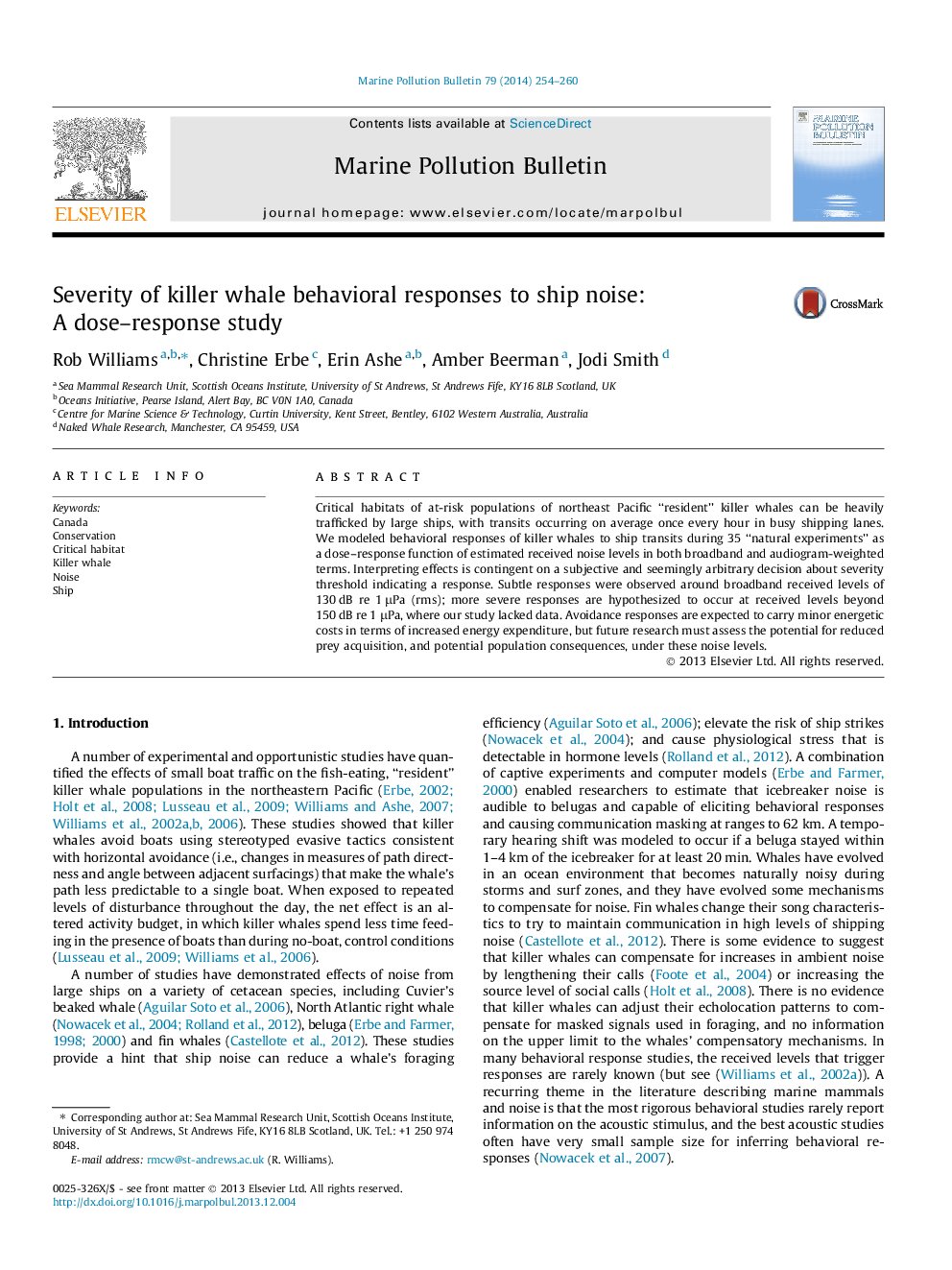| Article ID | Journal | Published Year | Pages | File Type |
|---|---|---|---|---|
| 6358895 | Marine Pollution Bulletin | 2014 | 7 Pages |
Abstract
Critical habitats of at-risk populations of northeast Pacific “resident” killer whales can be heavily trafficked by large ships, with transits occurring on average once every hour in busy shipping lanes. We modeled behavioral responses of killer whales to ship transits during 35 “natural experiments” as a dose-response function of estimated received noise levels in both broadband and audiogram-weighted terms. Interpreting effects is contingent on a subjective and seemingly arbitrary decision about severity threshold indicating a response. Subtle responses were observed around broadband received levels of 130 dB re 1 μPa (rms); more severe responses are hypothesized to occur at received levels beyond 150 dB re 1 μPa, where our study lacked data. Avoidance responses are expected to carry minor energetic costs in terms of increased energy expenditure, but future research must assess the potential for reduced prey acquisition, and potential population consequences, under these noise levels.
Related Topics
Physical Sciences and Engineering
Earth and Planetary Sciences
Oceanography
Authors
Rob Williams, Christine Erbe, Erin Ashe, Amber Beerman, Jodi Smith,
